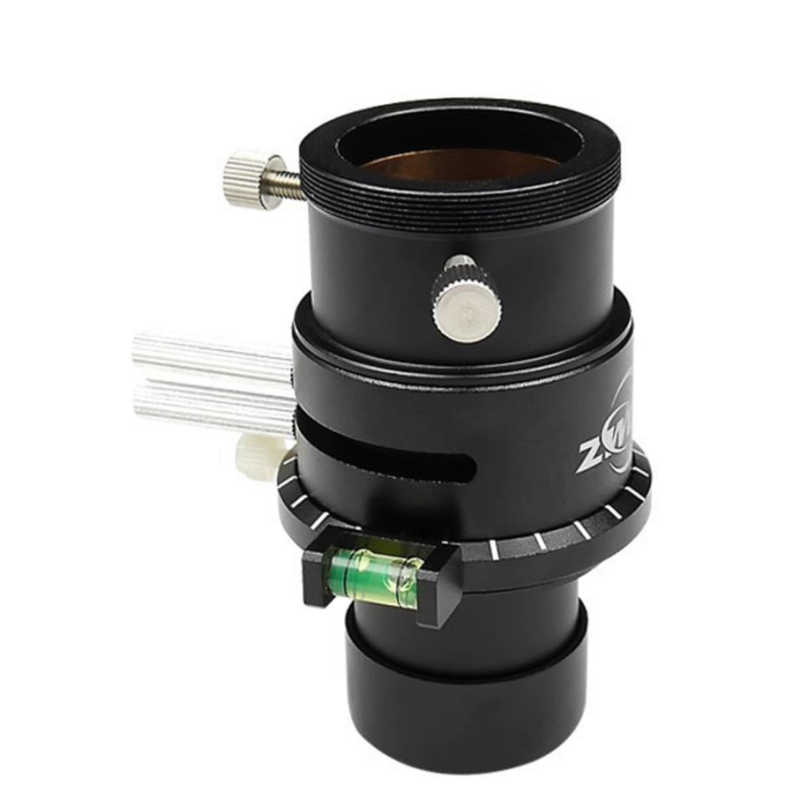
Reference: ZWEAF-N
Brand: ZWO
Reference: ZWEAF-N
Brand: ZWO
Reference: POA-URANUS-C
Brand: Player One
Reference: POA-ACS
Brand: Player One
Reference: AS-FRA400
Brand: ASKAR - Sharpstar
Reference: ZWASI120MINI
Brand: ZWO
Reference: AS-SET-DUO-D1D2
Brand: ASKAR - Sharpstar
Reference: ZWDC-Y-SPLIT
Brand: ZWO
Reference: AS-REDFRA400
Brand: ASKAR - Sharpstar
Banner








The ADC from ZWO will allow you, thanks to its prisms, to counter the diffraction caused by the passage of light from the planets in the atmosphere. So you can easily readjust the different layers of the light spectrum in relation to each other.
 security
security
100% Secure Payment
 Delivery policy
Delivery policy
Express shipping of in-stock parts
 RETURN POLICY
RETURN POLICY
Express shipping of in-stock parts
The light from stars and planets is refracted by the layer of air when it passes through the Earth's atmosphere. This refraction varies greatly depending on the wavelength of light; an effect which is known as 'dispersion'. This dispersion causes irritating colour fringing on the edges of planetary discs. The atmosphere thus acts basically like the lens of a telescope with chromatic aberration. Conversely, this means that you will even see colour fringing if you are using a high-quality telescope with no inherent chromatic aberration. The dispersion of the atmosphere cannot be corrected by the optics of your telescope. This is where the compact ADC instrument comes in - the ADC basically consists of two rotatable prisms made of silicate glass. The prisms produce a certain extent of own chromatic aberration themselves, which is opposite to the atmospheric dispersion. The ADC hence corrects this irritating effect. The relative position of the prisms can be freely adjusted via a small slide.
The effect of atmospheric dispersion strongly depends on the elevation (height) of the object observed appears in the sky. The lower the object is in the sky, the longer the path its light takes through the atmosphere and hence the greater the dispersion produced. The bright planets in particular are not often very high in the sky, especially if you live at high latitudes. The ADC lets you observe planets, not only when they are high in the sky but even when rising and setting, with high brilliance and colour and without chromatic aberration. This makes you much more flexible in your choice of observing time.
Colour fringing is only the most obvious characteristic of dispersion. Especially in photography, dispersion affects contrast adversely, such as in the impressive examples shown. One can increase image contrast in processing, but not without some loss of resolution. This makes the use of the ADC particularly attractive for astrophotography and for this reason this accessory comes with a T2 connection at both ends.
The glass surfaces are specially coated to ensure the ADC has very high light transmittance. The coating is optimized for the range of 300 to 700 nanometres - specifically for astrophotography.
When color imaging a planet without an ADC, you will end up with color fringing and distortion. Even though the appearance of these fringes and distortions are removed during processing, this has led to a loss of image resolution that cannot be recovered.
When imaging mono, taking individual red, green, and blue images and overlaying them helps to compensate for the image lag somewhat. However, to maximize image resolution, a luminance image should be taken. This will suffer from the same problems as a normal color image.
By using an ADC, distortions and image lag issues are eliminated resulting in a much more detailed image. When further processed, this results in a final image that is significantly improved.
To obtain a correct effect, the corrector must be correctly aligned with the horizon. This is usually the case if the two corrector levers are stacked parallel to the horizon as seen in the focuser.
Turning the levers by the same amount, but in opposite directions, will rotate the prisms so their effects don't cancel each other out. If the image deteriorates, both levers should be turned in the opposite direction.
Please consider that the direction of the horizon changes during hours when using an equatorial telescope. Of course, this must be taken into account.
No customer reviews for the moment.
Reference: BA-2961570
Brand: Baader Planetarium
Reference: KE327
Brand: Kepler
Reference: POA-URANUS-C
Brand: Player One

The ADC from ZWO will allow you, thanks to its prisms, to counter the diffraction caused by the passage of light from the planets in the atmosphere. So you can easily readjust the different layers of the light spectrum in relation to each other.
check_circle
check_circle